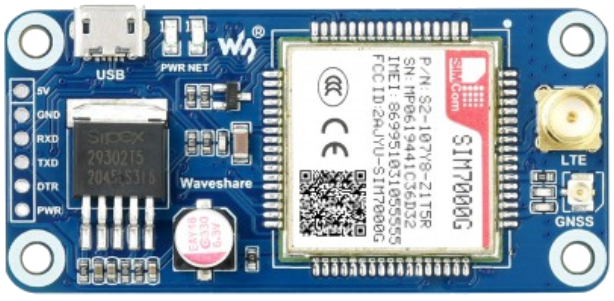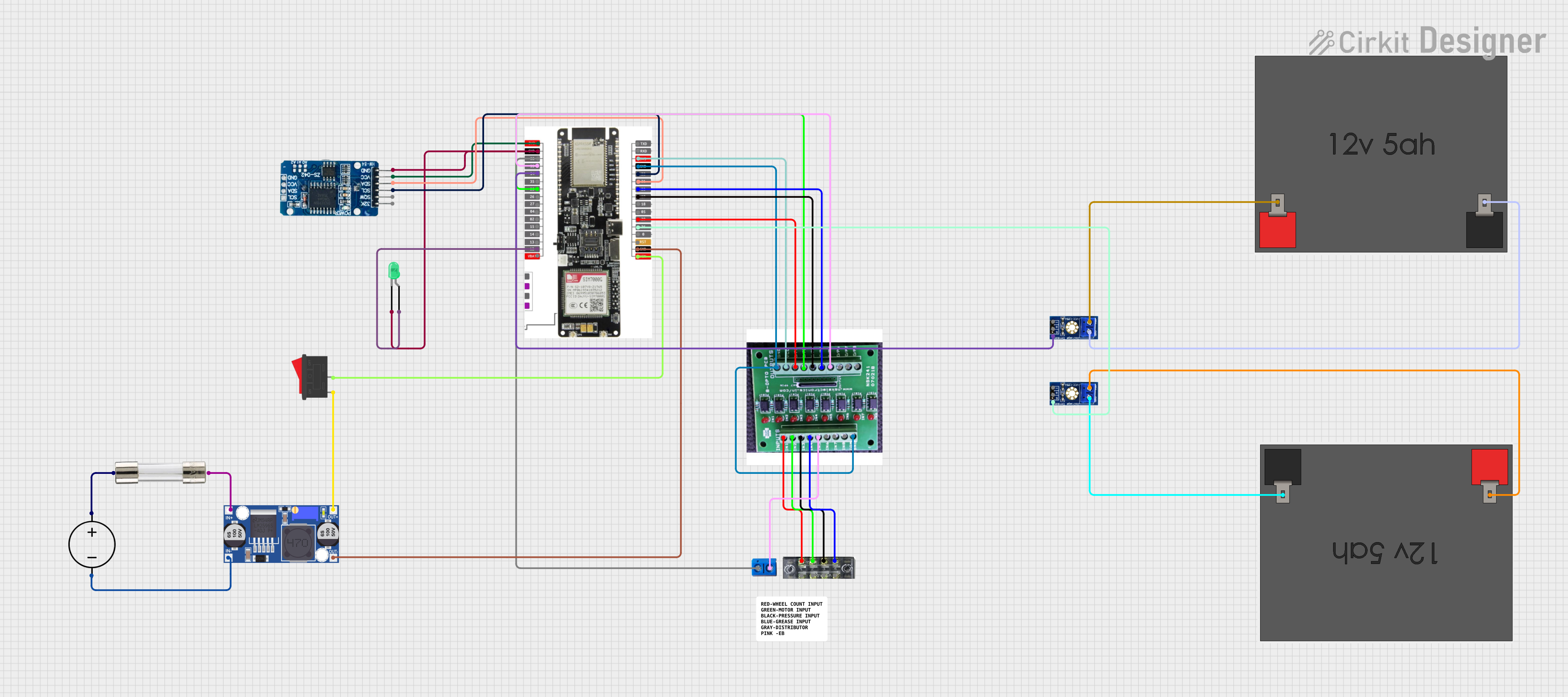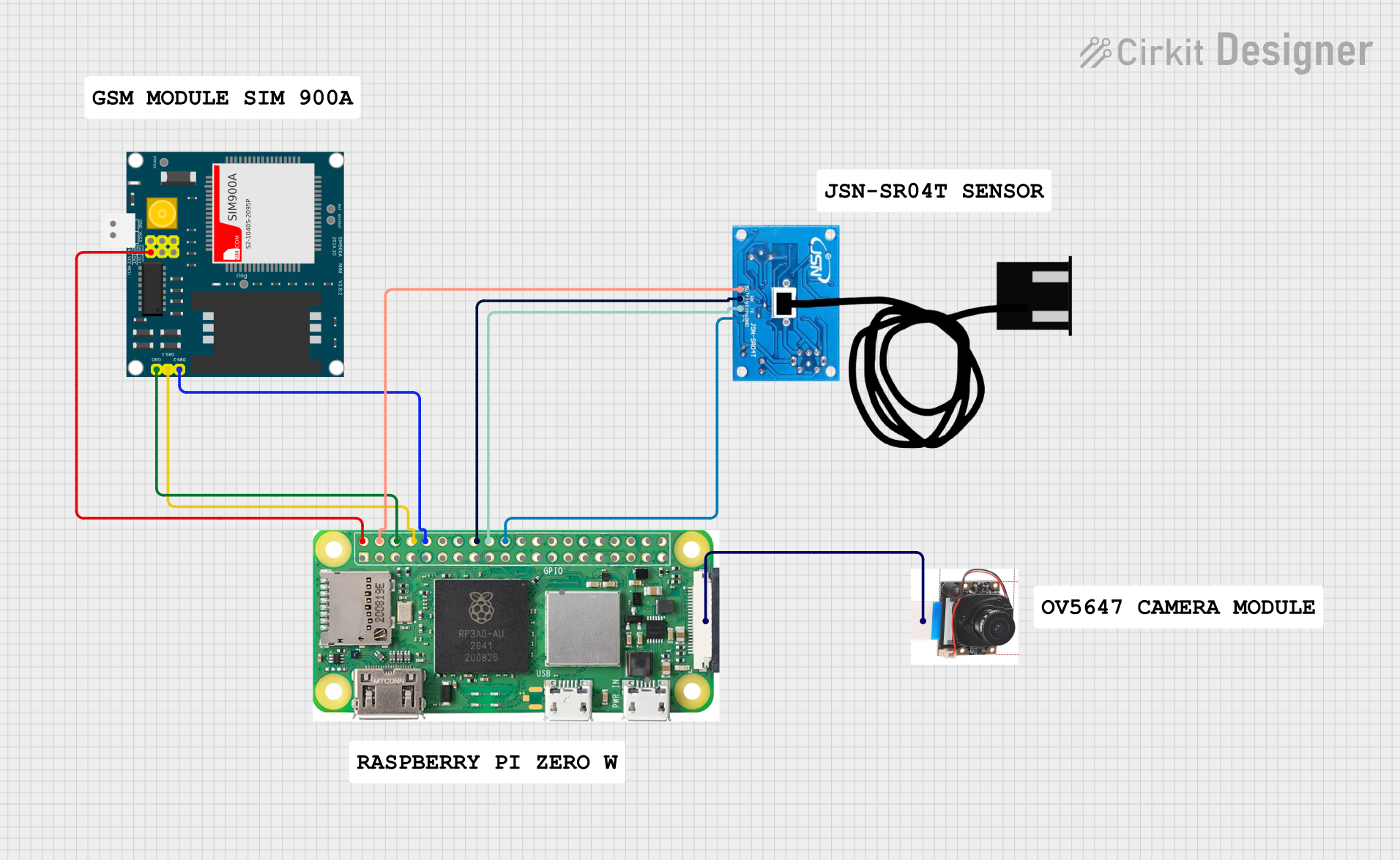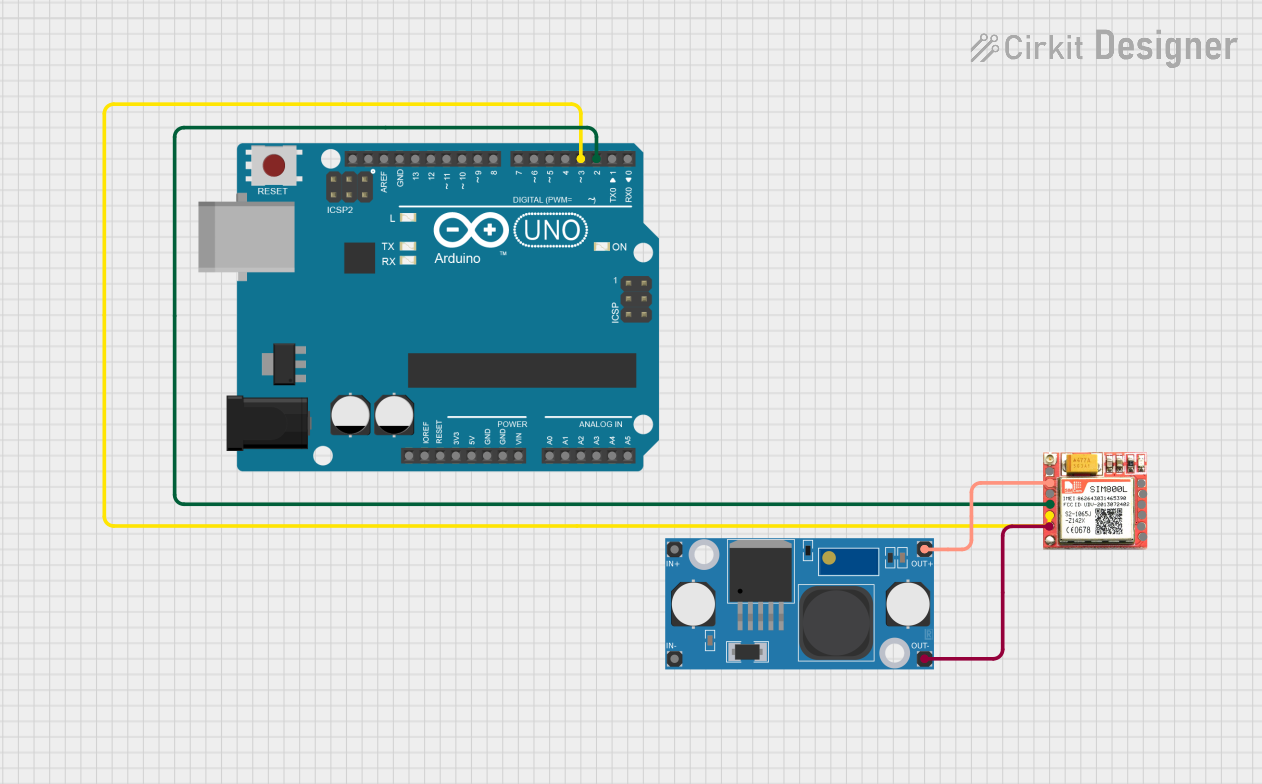
How to Use Waveshare Sim7000G: Examples, Pinouts, and Specs

 Design with Waveshare Sim7000G in Cirkit Designer
Design with Waveshare Sim7000G in Cirkit DesignerIntroduction
The Waveshare Sim7000G is a GSM/GPRS/NB-IoT module designed for cellular communication in IoT applications. Manufactured by Waveshare, this versatile module supports multiple frequency bands and offers features such as GPS positioning, making it ideal for remote monitoring, asset tracking, smart metering, and other IoT use cases. Its compact design and low power consumption make it a popular choice for battery-powered devices.
Explore Projects Built with Waveshare Sim7000G

 Open Project in Cirkit Designer
Open Project in Cirkit Designer
 Open Project in Cirkit Designer
Open Project in Cirkit Designer
 Open Project in Cirkit Designer
Open Project in Cirkit Designer
 Open Project in Cirkit Designer
Open Project in Cirkit DesignerExplore Projects Built with Waveshare Sim7000G

 Open Project in Cirkit Designer
Open Project in Cirkit Designer
 Open Project in Cirkit Designer
Open Project in Cirkit Designer
 Open Project in Cirkit Designer
Open Project in Cirkit Designer
 Open Project in Cirkit Designer
Open Project in Cirkit DesignerCommon Applications
- Remote monitoring and control systems
- GPS-based asset tracking
- Smart agriculture and environmental monitoring
- Smart metering for utilities
- Wearable devices with cellular connectivity
Technical Specifications
Key Technical Details
| Parameter | Value |
|---|---|
| Manufacturer | Waveshare |
| Part ID | Sim7000G |
| Communication Protocols | GSM, GPRS, NB-IoT, LTE Cat-M1 |
| GPS Support | Yes |
| Operating Voltage | 3.4V to 4.2V |
| Power Consumption | Idle: ~1.2mA (NB-IoT mode), Active: ~300mA (GPRS mode) |
| Frequency Bands | GSM: 850/900/1800/1900 MHz, LTE: B1/B2/B3/B4/B5/B8/B12/B13/B18/B19 |
| Operating Temperature | -40°C to +85°C |
| Dimensions | 30mm x 30mm |
Pin Configuration and Descriptions
The Sim7000G module has a standard pinout for interfacing with microcontrollers and other devices. Below is the pin configuration:
| Pin Number | Pin Name | Description |
|---|---|---|
| 1 | VCC | Power supply input (3.4V to 4.2V) |
| 2 | GND | Ground connection |
| 3 | TXD | UART Transmit Data |
| 4 | RXD | UART Receive Data |
| 5 | PWRKEY | Power-on key (active low) |
| 6 | NET_STATUS | Network status indicator |
| 7 | RST | Reset pin (active low) |
| 8 | GPS_TXD | GPS UART Transmit Data |
| 9 | GPS_RXD | GPS UART Receive Data |
| 10 | ADC | Analog-to-Digital Converter input |
| 11 | SIM_DET | SIM card detection pin |
| 12 | DTR | Data Terminal Ready (used for sleep mode control) |
Usage Instructions
How to Use the Sim7000G in a Circuit
- Power Supply: Connect the VCC pin to a stable 3.7V power source and GND to ground. Ensure the power supply can handle peak currents of up to 2A during transmission.
- UART Communication: Connect the TXD and RXD pins to the UART pins of your microcontroller (e.g., Arduino UNO). Use a logic level converter if your microcontroller operates at 5V logic.
- Power On: Pull the PWRKEY pin low for at least 1 second to power on the module.
- Antenna Connection: Attach a compatible GSM/LTE antenna to the module for proper signal reception.
- SIM Card: Insert a micro-SIM card into the SIM card slot. Ensure the SIM card is activated and has a data plan.
- GPS Functionality: If GPS is required, connect the GPS_TXD and GPS_RXD pins to the microcontroller's UART pins and attach a GPS antenna.
Important Considerations
- Power Supply: Use a low-noise power supply to avoid communication issues.
- Antenna Placement: Place the antenna away from high-frequency noise sources for optimal performance.
- Firmware Updates: Check for firmware updates from Waveshare to ensure compatibility with the latest networks.
- Sleep Mode: Use the DTR pin to enable sleep mode for power-saving applications.
Example Code for Arduino UNO
Below is an example of how to send an SMS using the Sim7000G module with an Arduino UNO:
#include <SoftwareSerial.h>
// Define RX and TX pins for SoftwareSerial
SoftwareSerial sim7000G(7, 8); // RX = Pin 7, TX = Pin 8
void setup() {
// Initialize serial communication
Serial.begin(9600); // For debugging
sim7000G.begin(9600); // For Sim7000G communication
// Power on the module
pinMode(9, OUTPUT); // PWRKEY connected to Pin 9
digitalWrite(9, LOW); // Pull PWRKEY low
delay(1000); // Wait for 1 second
digitalWrite(9, HIGH); // Release PWRKEY
// Wait for the module to initialize
delay(5000);
// Send AT commands to configure the module
sendCommand("AT"); // Check communication
sendCommand("AT+CMGF=1"); // Set SMS mode to text
sendCommand("AT+CMGS=\"+1234567890\""); // Replace with recipient's phone number
sim7000G.print("Hello from Sim7000G!"); // SMS content
sim7000G.write(26); // Send Ctrl+Z to send the SMS
}
void loop() {
// Check for responses from the module
if (sim7000G.available()) {
Serial.write(sim7000G.read());
}
}
// Function to send AT commands
void sendCommand(String command) {
sim7000G.println(command);
delay(1000); // Wait for the module to process the command
}
Notes:
- Replace
+1234567890with the recipient's phone number. - Ensure the SIM card has sufficient balance or an active data plan.
Troubleshooting and FAQs
Common Issues and Solutions
Module Not Powering On
- Ensure the PWRKEY pin is pulled low for at least 1 second.
- Verify the power supply voltage is within the 3.4V to 4.2V range.
- Check for loose connections or insufficient current supply.
No Network Connection
- Confirm the SIM card is properly inserted and activated.
- Check the antenna connection and placement.
- Use the
AT+CSQcommand to check signal strength. A value above 10 is recommended.
GPS Not Working
- Ensure the GPS antenna is connected and placed in an open area with a clear view of the sky.
- Use the
AT+CGNSPWR=1command to enable GPS functionality.
AT Commands Not Responding
- Verify the UART connections and baud rate settings.
- Check if the module is powered on and initialized.
FAQs
Can the Sim7000G work with 5V microcontrollers?
- Yes, but you must use a logic level converter for UART communication to avoid damaging the module.
What is the maximum data rate supported?
- The maximum data rate depends on the network and mode. For NB-IoT, it is typically lower than LTE Cat-M1.
How do I update the firmware?
- Firmware updates can be performed using the manufacturer's tools and instructions available on the Waveshare website.
Can I use the module for voice calls?
- No, the Sim7000G is designed primarily for data communication and SMS. Voice call functionality is not supported.